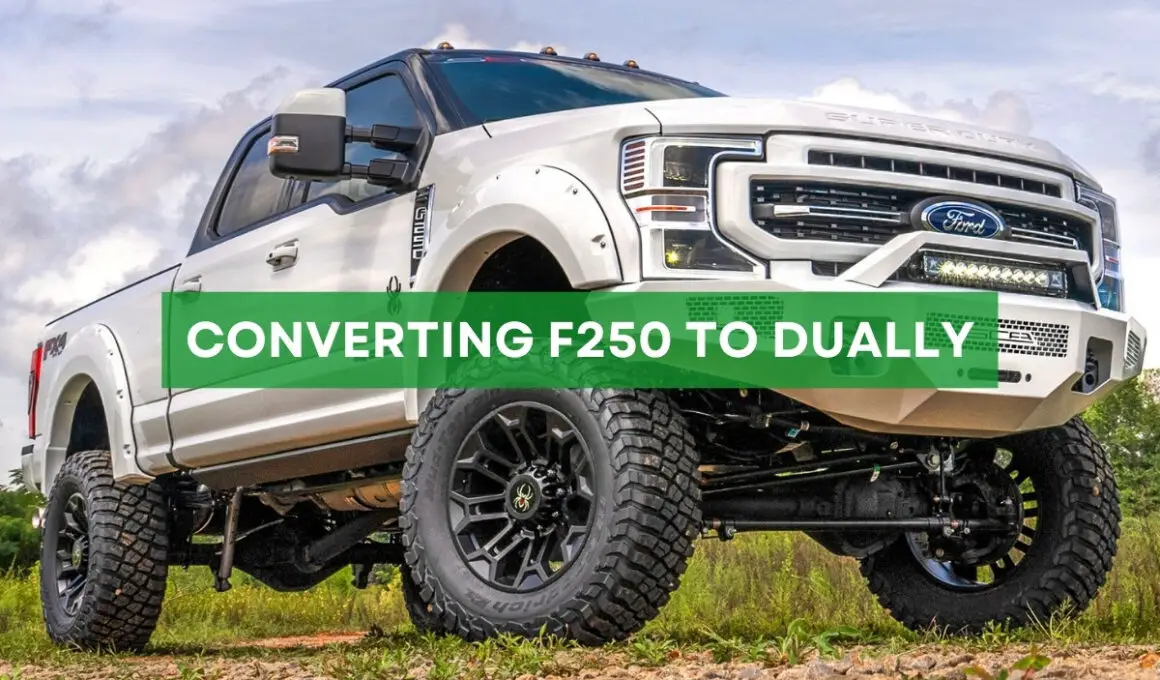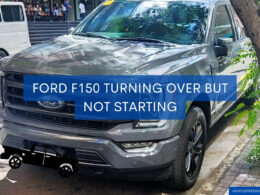In This Article Show
I’m excited to share with you one of the most intriguing and practical modifications that truck owners often contemplate – converting an F250 to a Dually. As a seasoned mechanic with over a decade of experience, I’ve tackled numerous projects and learned a thing or two along the way. This particular modification is a game-changer for many, and I’m thrilled to be your guide on this journey.
The F250, as many of you know, is a powerhouse in its own right. But did you know you can elevate its performance and utility with a few modifications? By transforming it into a Dually, you can enhance its stability, boost its towing capacity, and increase its resale value. Now, this isn’t a quick fix or a superficial makeover; it’s an in-depth process that requires careful planning, a good grasp of mechanics, and some gritty hands-on work.
This blog post will delve into everything you need about this conversion process. From understanding what a Dually truck is to a detailed step-by-step guide on how to make the transformation, potential challenges, and how to overcome them, this post covers it all.
Whether you’re a seasoned mechanic like myself or a hands-on truck owner looking to take on an exciting project, this guide will provide valuable insights and practical advice to convert your F250 into a Dually successfully.
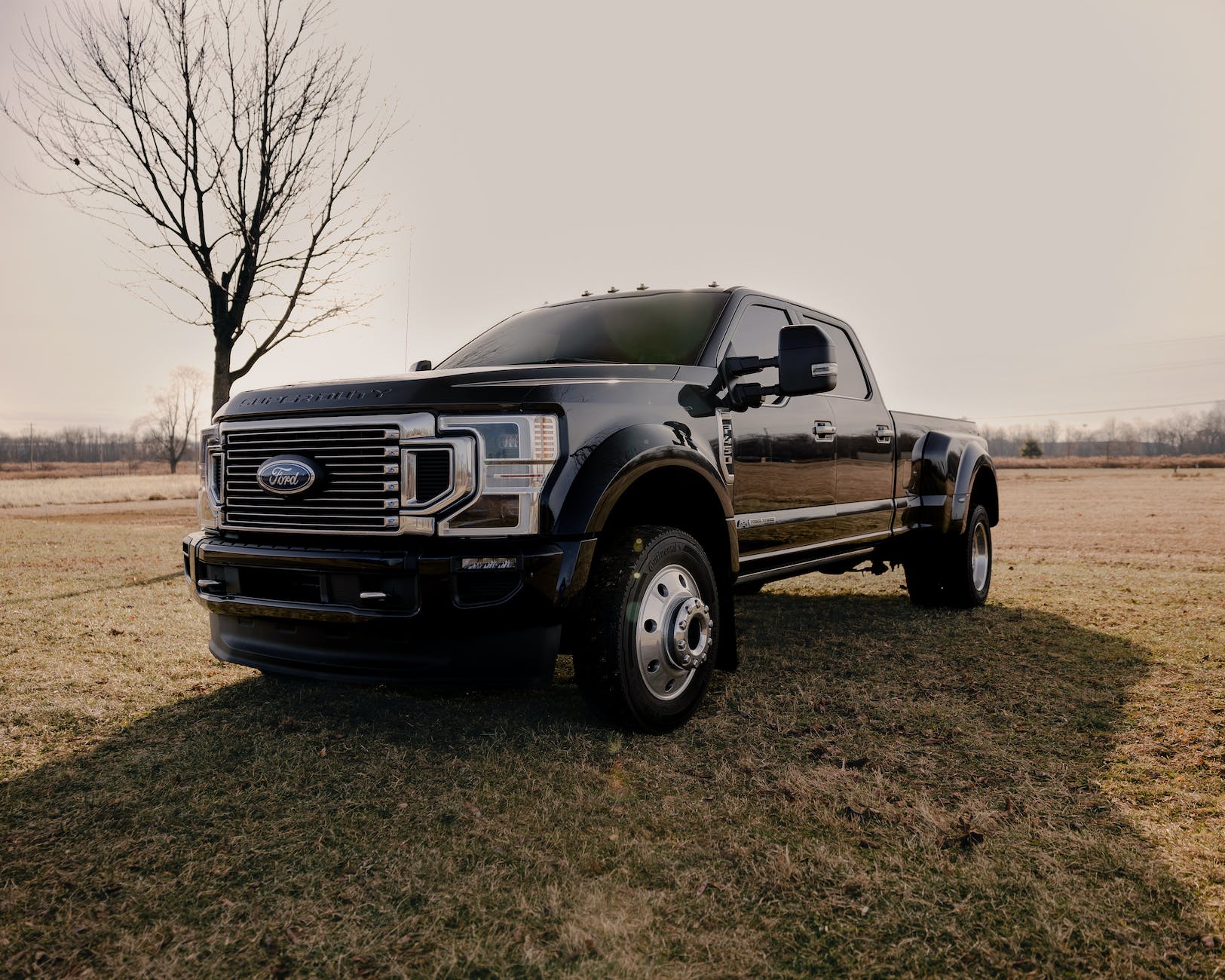
What is a Dually Truck?
A Dually truck, short for ‘dual-wheeled’, essentially means that the truck has two wheels on each side of its rear axle instead of the typical single wheel. This design significantly broadens the truck’s stance at the rear, providing numerous benefits.
Firstly, Dually trucks are recognized for their superior stability. The wider stance provided by the double wheels on each side of the rear axle increases the truck’s balance, making it less likely to tip or roll over, especially during challenging drives or when carrying heavy loads.
Secondly, their towing capacity is significantly higher than their single rear-wheel counterparts. This increased capacity makes Dually trucks popular among those who frequently haul heavy loads, such as trailers, fifth wheels, or large boats.
Lastly, Dually trucks typically perform better on tough terrains, thanks to the additional grip and traction provided by the extra wheels. This is particularly beneficial when the surface is slippery or uneven.
However, it’s important to note that not all trucks are built as Dually models. The Ford F250, for instance, comes with a single rear-wheel setup. This is where the conversion option comes into play, allowing truck owners to enjoy the advantages of a Dually without necessarily having to purchase a new vehicle.
Reasons to Convert Your F250 to a Dually
Opting to convert your F250 into a Dually is not a decision to be taken lightly. It requires careful consideration and understanding of the potential benefits. Below are some key reasons why such a conversion might be right up your alley.
1. Enhanced Stability
A Dually truck, with its extra set of wheels on the rear axle, provides a wider base and thus a better balance. This enhanced stability is particularly noticeable and beneficial when you’re hauling heavy loads, reducing the risk of tipping or swaying.
2. Increased Towing Capacity
One of the primary reasons for converting to a Dually is the significant increase in towing capacity. The F250 is already a formidable workhorse, but adding another set of wheels allows it to handle much larger loads easily. If your work or lifestyle involves hauling heavy trailers or equipment, a Dually can prove to be a game-changer.
3. Better Performance on Tough Terrains
Dually trucks are not only for hauling; they also excel on tough terrains. With twice the contact area on the road from the extra wheels, you get increased traction, especially beneficial on slippery or uneven surfaces.
4. Enhanced Resale Value
Though not the primary reason for many, it’s worth noting that Dually trucks often command a higher resale value than their single rear wheel counterparts. If you’ve done the conversion correctly and maintained the truck well, you could see a significant return on your investment in the long run.
Making the switch to a Dually isn’t a one-size-fits-all solution, but if the advantages align with your needs, it’s certainly an option worth considering.
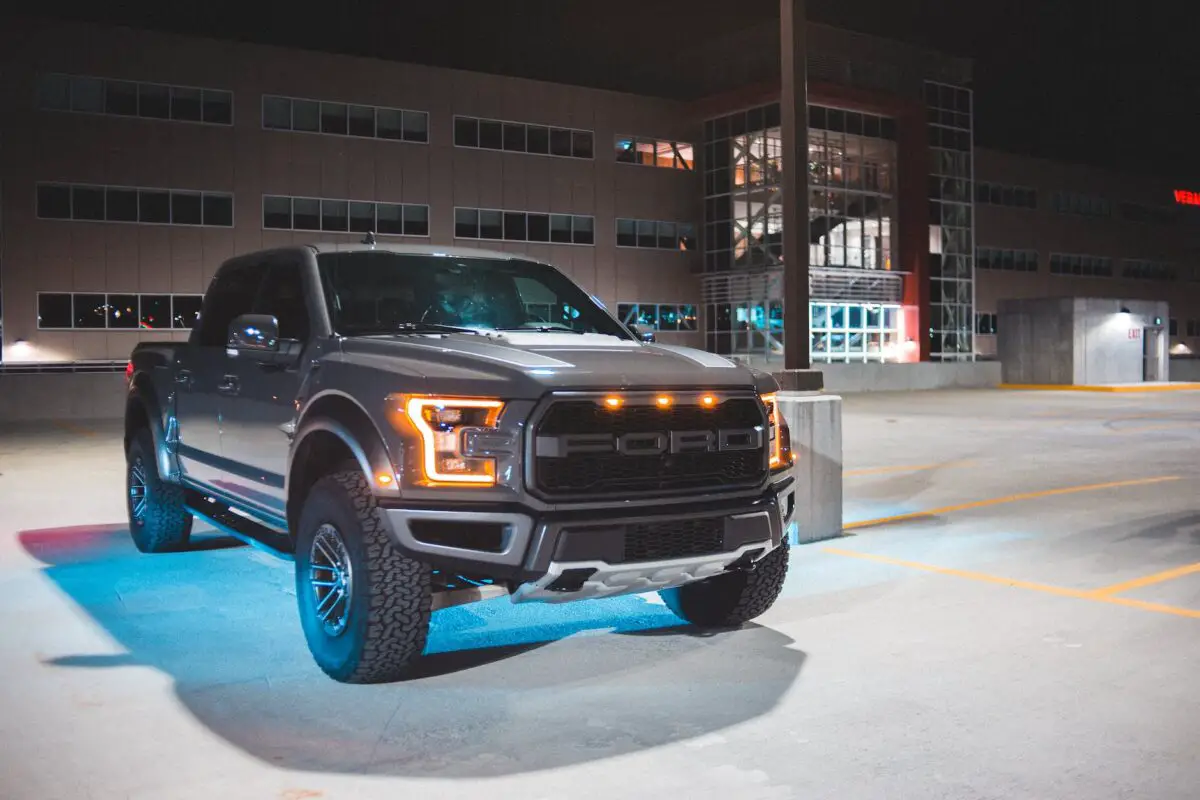
A Detailed Guide on Converting an F250 to a Dually
Converting your F250 into a Dually requires careful planning, technical know-how, and a hands-on approach. This section provides a step-by-step guide to help you confidently navigate this conversion.
1. Initial Assessment and Planning
Legalities and Insurances: Before beginning, consult with local authorities and your insurance provider to understand the conversion’s legal and insurance implications. Regulations vary, and ensuring your modified vehicle will still be road-legal and insurable is essential.
Costs and Timeline
Next, create a budget and timeline for your project. The total cost will depend on the parts you select, whether you do the work yourself or hire a professional, and any unforeseen issues. Similarly, while the conversion could take a few days for an experienced mechanic, anticipate that it may take longer if you’re doing it yourself.
Required Tools and Equipment
For this project, you’ll need a range of tools, including a jack and jack stands, wrenches and sockets, a torque wrench, a tire pressure gauge, and safety gear such as gloves and safety glasses. Depending on your specific conversion kit, additional tools may be required.
2. Step-by-Step Conversion Process
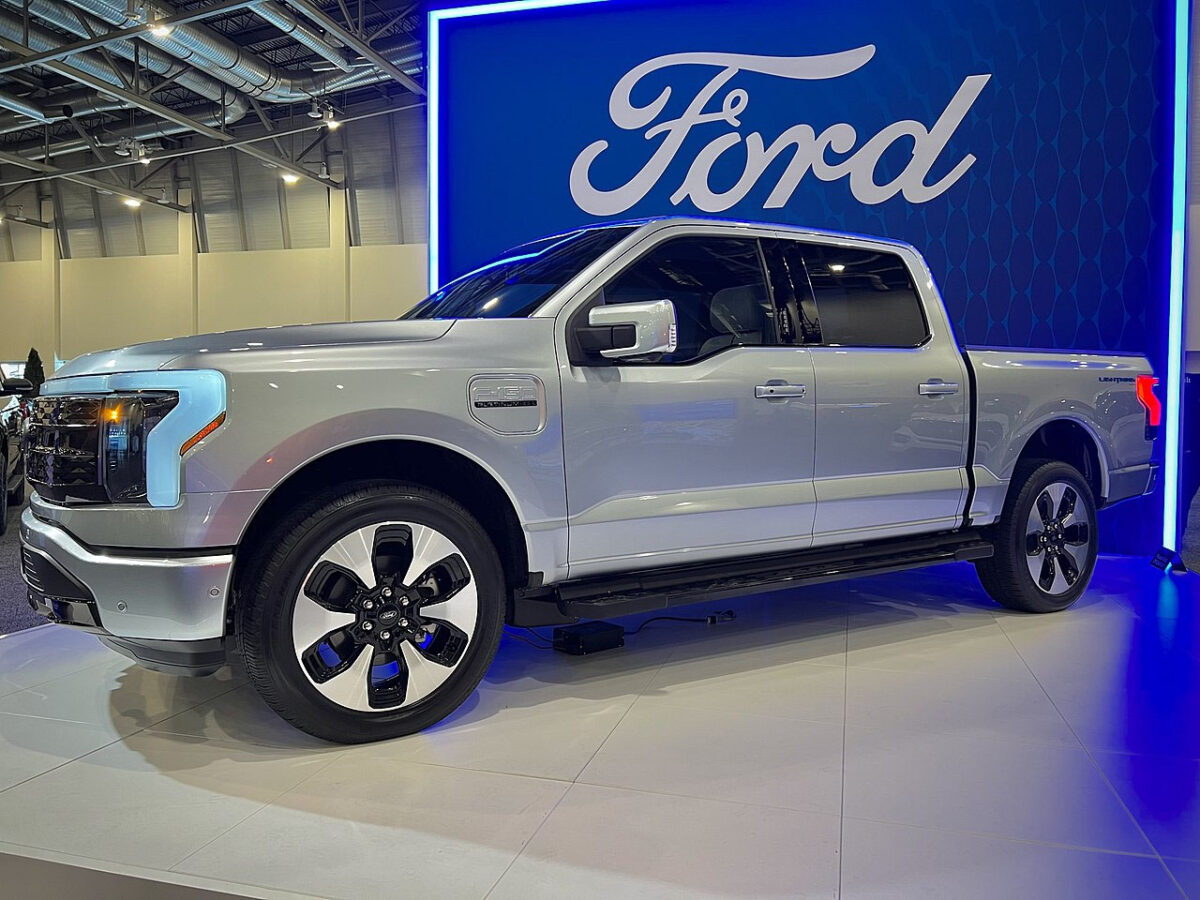
Disassembling the Current Setup
Start by safely jacking up your truck and removing the rear wheels. Next, carefully remove the single rear axle.
Installing Dually Conversion Kit
Install your chosen Dually conversion kit. This will typically include a new, broader axle, an extended differential, and additional suspension components. Follow the manufacturer’s instructions carefully, ensuring each component is securely fastened.
Wheel and Tire Modifications
Once the axle and suspension have been updated, install the new dual wheel setup. Again, consult the manufacturer’s instructions for specific details, making sure to torque the lug nuts to the recommended specification.
Brake and Suspension Adjustments
Given your new Dually’s increased weight and towing capacity, brake system and suspension adjustments may be needed to ensure safe and comfortable operation.
Body Work
With the mechanical elements completed, it’s time to adjust the bodywork to accommodate the wider wheelbase. This typically involves installing new fender flares or even a complete rear fender replacement.
Final Assembly and Inspection
Reassemble any remaining parts, lower the truck back to the ground, and conduct a thorough inspection. Test all lights and systems, and make sure the truck handles well during a test drive.
Remember, this guide provides a general overview, and the specifics of your conversion process may vary based on your truck’s model year, the specific conversion kit you choose, and other factors. Always refer to the instructions and recommendations provided by the manufacturer of your conversion kit.
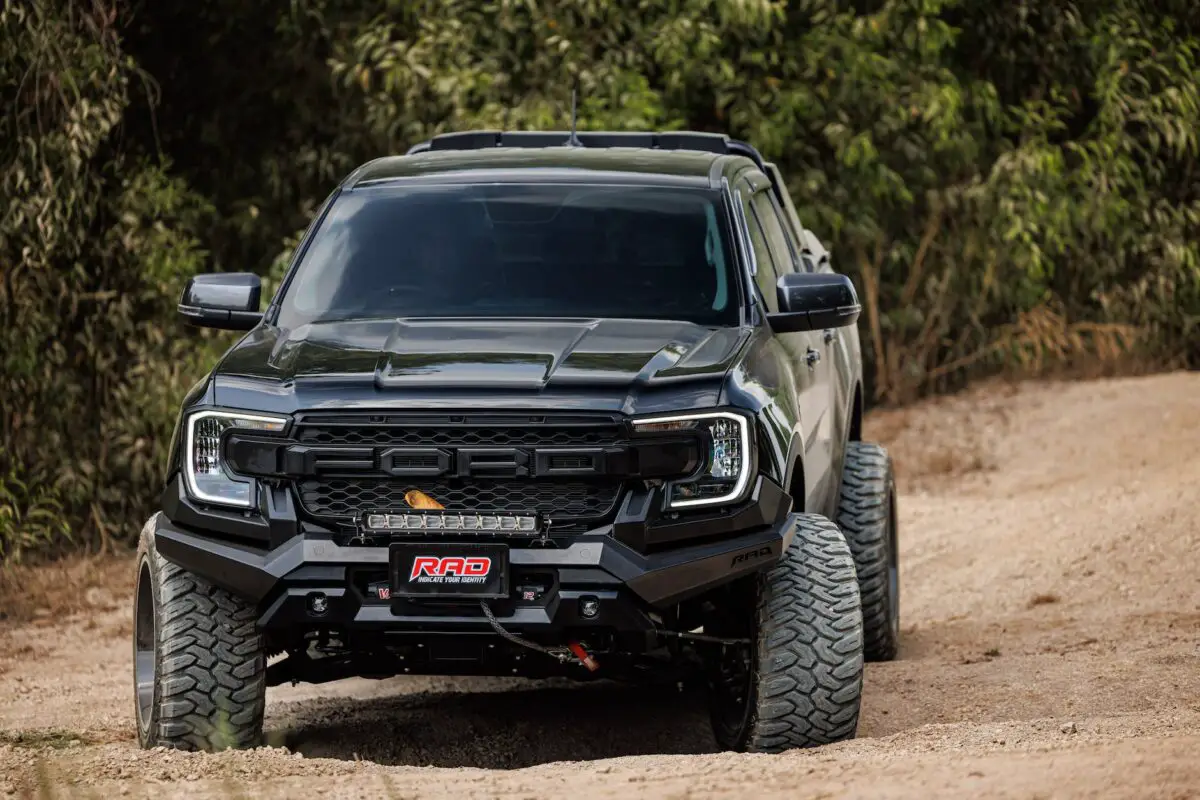
FAQs on Converting F250 to a Dually
Are Dually Trucks Hard to Drive?
Dually trucks have a wider rear, which might require some getting used to, especially when parking or navigating tight spaces. However, with practice, many drivers find them just as manageable as standard trucks. Their stability, especially when towing, often enhances the driving experience.
Does a Dually Get Better Mileage?
Typically, Dually trucks have a slightly lower miles-per-gallon (MPG) rating than their single rear wheel counterparts due to the increased weight and larger contact area with the road. However, the difference might be negligible, especially when balanced against the benefits like improved towing capacity and stability.
Is It Cost-Effective to Convert an F250 to a Dually?
The cost-effectiveness of a conversion largely depends on the individual’s needs. The increased stability and towing capacity can be invaluable if you frequently haul heavy loads. However, the cost might outweigh the benefits if you’re looking for aesthetic reasons alone. Assessing your specific requirements and comparing the conversion costs to the potential long-term advantages is essential.
What Are the Long-Term Maintenance Costs for a Dually?
Dually trucks have additional maintenance considerations due to the extra set of wheels. This could mean more frequent tire rotations, brake checks, and alignments. The cost might be slightly higher than maintaining a single rear-wheel truck. However, with regular maintenance and checks, these costs can be managed, ensuring the truck’s longevity.
In conclusion, converting an F250 to a Dually is a significant decision that comes with many considerations. Whether you’re thinking about the conversion for practical or aesthetic reasons, it’s vital to be well-informed.






